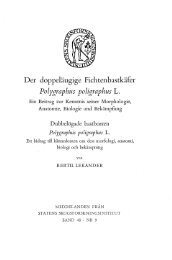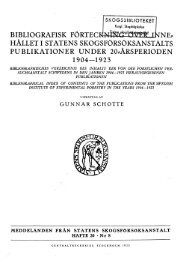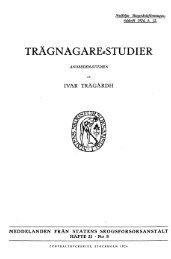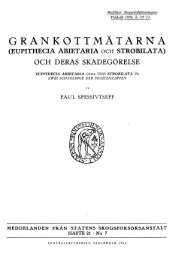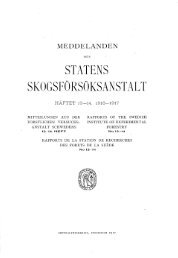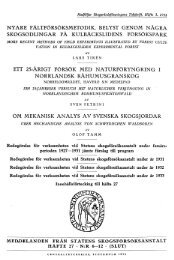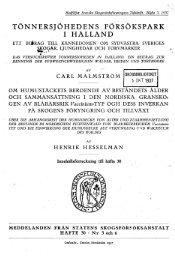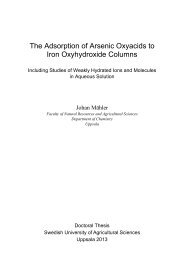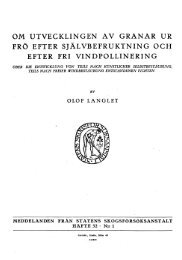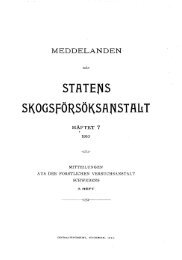SVERIGES LANTBRUKSUNIVERSITET - Epsilon Open Archive - SLU
SVERIGES LANTBRUKSUNIVERSITET - Epsilon Open Archive - SLU
SVERIGES LANTBRUKSUNIVERSITET - Epsilon Open Archive - SLU
Create successful ePaper yourself
Turn your PDF publications into a flip-book with our unique Google optimized e-Paper software.
The pressure chamber technique is much used for measuring leaf water<br />
potential in the field due to its rapidity and reliability. Also it does not<br />
require accurate controi of temperature. The principle of the technique,<br />
bas ed upon a rediscovery of Scholander et al. (1965), is that a leaf or<br />
branch is placed in the pressure chamber with the cut end just protruding<br />
from the chamber through a rubber bung which seals the chamber (Fig. 6).<br />
During the measurement the leaf is sealed in a bag to minimize evaporation<br />
and hereby ch ange of water potential during the measurement.<br />
POlythene bag<br />
Fig. 6 Pressure chamber with the leaf sealed in a polyethylene bag in order<br />
to minimize dehydration through evaporation. (Af ter Jones, 1983).<br />
The pressure of the chamber is slowly increased (10-30 kPa s-l) to a<br />
pressure sufficient to balance the tension by which the water is held in the<br />
xylem and force the meniscus back to the cut surface which easily can be<br />
recorded visually in a microscope. As the osmotic potential of the xylem<br />
sap is high (> - 0.05 MPa) the negative balance pressure therefore nearly<br />
equals the leaf water potential and is most of ten used without correcting<br />
for osmotic potential of the xylem sap. Further cautions and procedures are<br />
given by Turner (1988) and Bannister (1986). Turner (1988) lists several<br />
commercially available pressure chambers.<br />
The thermocouple psychometer technique is based on eq. (2), Le. that<br />
water potential of plant tissue can be obtained from measurement of<br />
relative humidity obtained af ter equilibration of the tissue in a small<br />
chamber.<br />
A detailed description of the use of psychrometer technique for measuring<br />
water potential and its components is given by Wiebe et al. (1971) and<br />
Slavik (1974). Savage et al. (1981) have in detail investigated the<br />
calibration of psychrometers. Temperature compensated thermocouple<br />
psychrometers for conventionaI use on plant tissue and for in situ<br />
measurement of leaf water potential (Campbell and Campbell, 1974) are<br />
commercially available through Wescor Inc., 459 South Main Street, Logan,<br />
Ut ah 84321, USA.<br />
57





